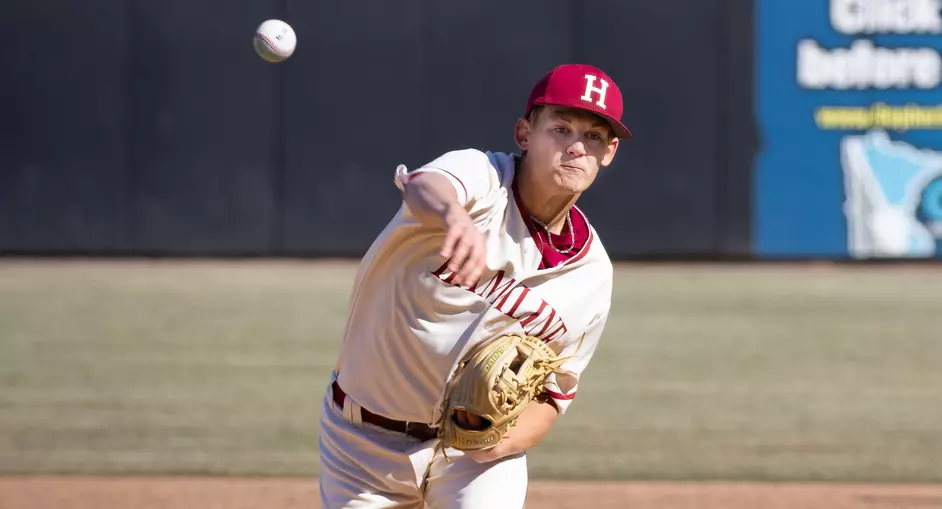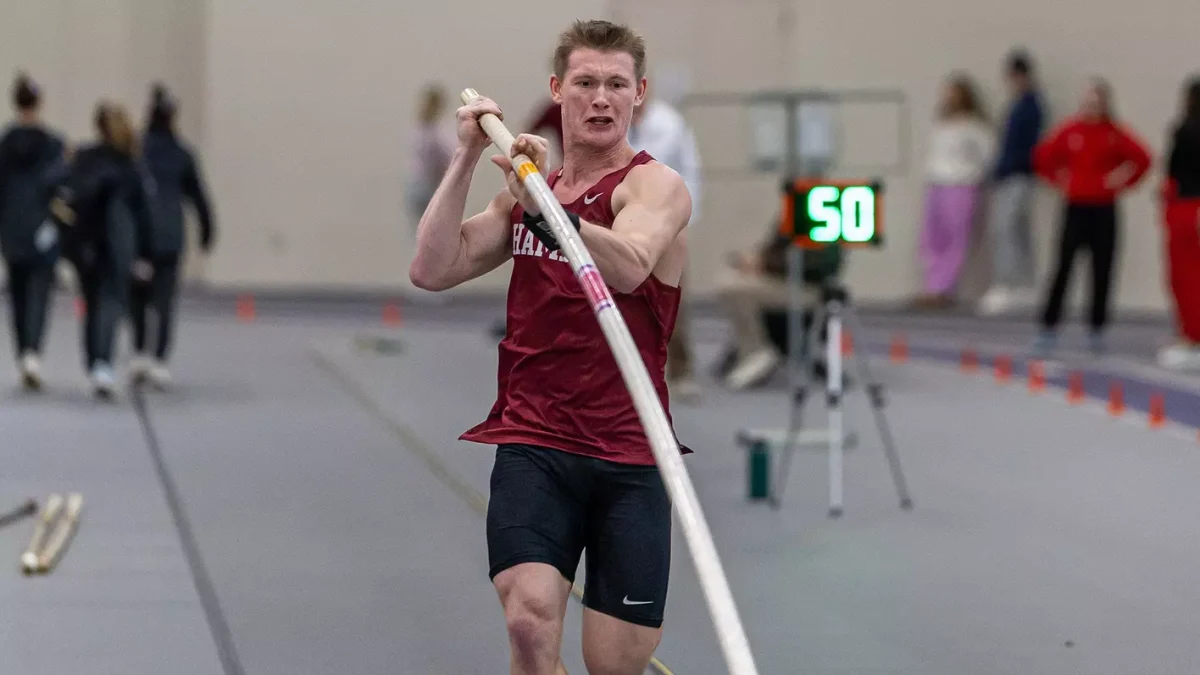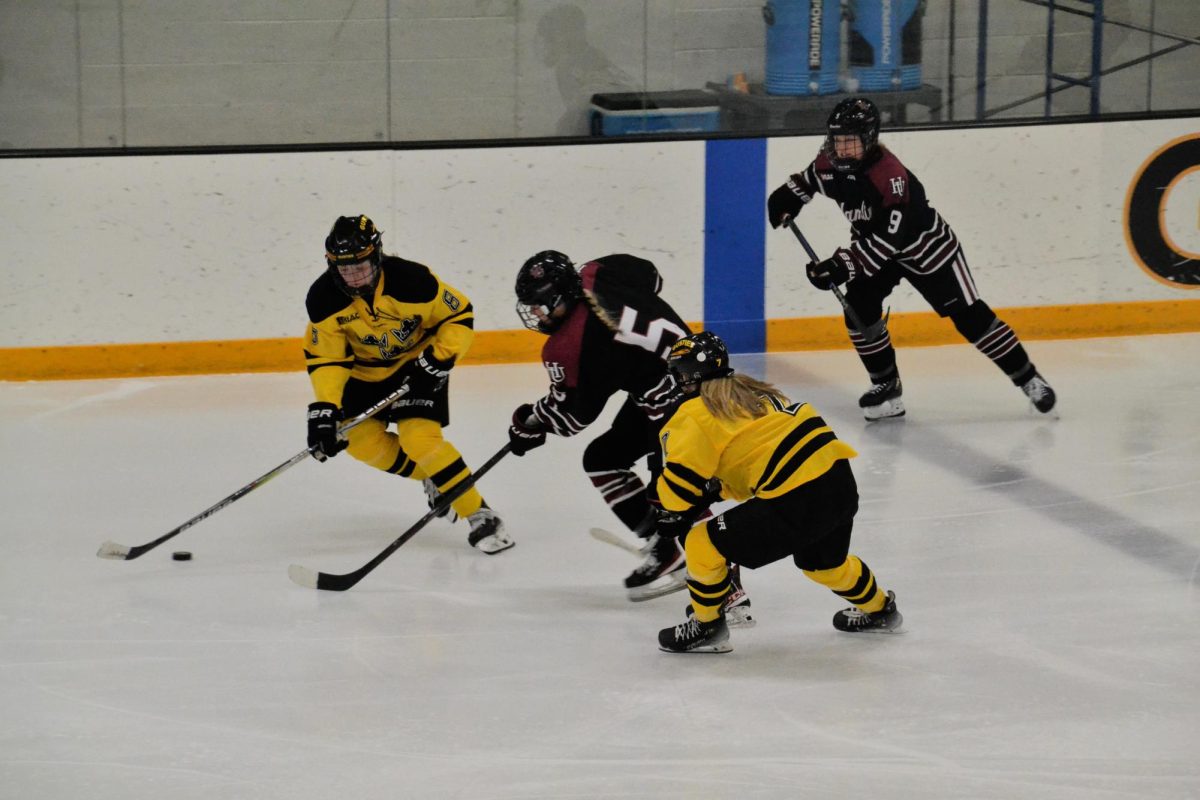Students feel divided
Senior and football player Caleb Lueders expressed that, somewhat naturally, there is a split between the athletic and non-athletic sides of campus.
“As much as I don’t want to say there is [a divide], there obviously is,” Lueders said. “There always is, and it’s not necessarily a bad divide, but there are big differences and a noticeable divide between people that are student athletes here at Hamline and people that are not.”
Lueders, through playing sports himself and observing those around him, explained one reason for why this separation occurs.
“If you’re a student athlete, you have your teammates, so sometimes it’s easier to not try to bridge across and find other connections,” Lueders said.
First-year student and gymnast Riley Gianotti shared this sentiment and added that athletes’ lack of ability to connect with others can often be boiled down to the absence of extra time outside of practice and games.
“I wish I could support my friends that aren’t in athletics more, but I feel like I can’t because I’m always doing something for athletics or I always have something coming up for athletics. I want to join clubs. I want to do things, but I can’t because I have to be at practice every day,” Gianotti said.
Sophomore Elisa Lopez, next year’s external president of Hamline Undergraduate Student Congress (HUSC) and a nonathlete, sees not only a metaphorical divide between the two groups but a physical one as well.
“[The divide] affects the way we all go about socializing. At Anderson you’ll see three tables of athletes and everyone else kind of spaced out. [The divide] affects how events go about, how you socialize, how you meet people,” Lopez said. “It makes sense, cliques happen for a reason, teams bond, but [the divide] definitely shifts the way we meet with people.”
Sophomore and basketball player Sophie Stork understands how some feel the incongruity of the student body, but she personally is not affected by any disconnect. Instead she emphasized that it is up to the person to make connections with people outside of their group.
“[Connection between athletes and non-athletes] depends on the effort that the certain student puts in. I interact with both athletes and non-athletes. I would like to see more non-athletes and athletes connecting, whether it be at games or other events on campus,” Stork said.
First-year Matías Clauson, who plays intramurals and attends athletic games when he can, feels similarly to Stork.
“I feel as much support as I give. In times where I’ve been able to support others and encourage others, people are very eager to give that support back,” Clauson said.
Lueders spoke on his experience as a football player about non-athlete support which is on par with the sentiment Stork and Clauson shared.
“I do feel supported by students. That’s a two way road; you can’t expect somebody to support you if you don’t support them. I have a lot of friends that are not athletes here. […] They deserve just as much support as I should on a football field or in any athletic event I’m participating in. They should get the same amount of support,” Lueders said.
Bridging the divide
The Director of Sports Information Programs, David Nelson, through his experience of having the same job at many universities feels that Division III athletics creates a unique relationship within the student body that is not seen at schools in higher divisions.
“The beauty of Division III athletics is it is very tight knit. [Students] are not here necessarily for athletics. That is not their number one priority. They are here for their academics. And that always comes at the forefront,” Nelson said. “That is what makes Division III athletics very special, is that you see all communities within the university coexist, which is very, very beneficial for everyone.”
For those who do feel a disconnect from their fellow students, there is still hope. According to many athletes, non-athletes and athlete family members, there are many ways to connect with each other.
Clauson feels that intramurals are one fun way for him to interact with athletes and have a good time. This can certainly be a daunting task for some, but if more non-athletes participate, it might become less scary.
“[Intramurals allow me to] be able to try out different sports and do some athlete stuff without having to commit a bunch of time to it,” Clauson said. “Last semester I played volleyball. I had never done that before. I went from not understanding the game at all to being a decent player and just having a lot of fun and meeting a lot of people who were really good at volleyball through that.”
Hamline has a branch of the National Collegiate Athletic Association (NCAA) Student Athletic Advisory Committee (SAAC) which is an organization that provides student-athletes with a way to voice their opinions. According to Stork, Hamline’s SAAC is working to bring more non-athletes to athletic spaces.
“[Growing the connection between athletes and non-athletes] is one of the things that SAAC is going to try to focus on next year, which is how to make games more fun for people, [such as] hosting halftime games and making it a fun environment for everybody. It is hard because sports schedules can interfere with a lot of different events on campus,” Stork said.
Hamline’s Senior Associate Director of Athletics Beth Rittler spoke on her perspective of the divide and how SAAC is working to bridge it.
“There have been divides at times but I certainly believe the connections are improving. [SAAC] works hard to connect across the campus community. We have wonderful support at our home events from students, faculty, staff and alumni. In particular, during the men’s basketball postseason run, we saw many students — athletes and non-athletes alike — make the trip to St. John’s and Gustavus. It was awesome to see the support!” Rittler wrote in an email.
Another way, suggested by many students, to build community is for non-athletes to attend more games to physically show support for their peers.
According to junior Precious Keke, attending games is an easy way for students to connect with each other and relate over the common goal of cheering for the Pipers. While watching the Women’s Lacrosse game on April 27, Keke expressed that it is fun to scream about something and support women’s athletics. Keke also explained that they almost cannot avoid being a part of the community when at a game because everyone is cheering for the same thing.
Sophomore and football player Michael Cromer is one of the leading members of the Bleacher Boys, a group on campus with the intention of reigniting fan culture and getting more students out to athletic events. Cromer has attended hundreds of sporting events this spring semester and shared that games are a great way to not only support athletes but also to make new friends.
“[Going to games] is a good way to meet new people. Through that, I have already met a bunch of people that I don’t think I would have ever met before,” Cromer said.
Hamline’s wider community has the ability to continue growing closer together. Lopez, through her work with the Hamline University Programming Board (HUPB), has seen how athlete event attendance is affected by their schedule. She recommended establishing more events, activities and locations for the two sides of campus to interact more often.
“More initiatives and more spaces where intermingling is accessible. Student activities tend to conflict with a lot of athletic games and athletic events, so a lot of events athletes can’t be a part of and that’s something that I became very aware of,” Lopez said. “All of my athletic friends can’t be at this event because they all have practice right now. I also think there could be more of an effort, both ways, of people trying to explore the other side of campus.”






